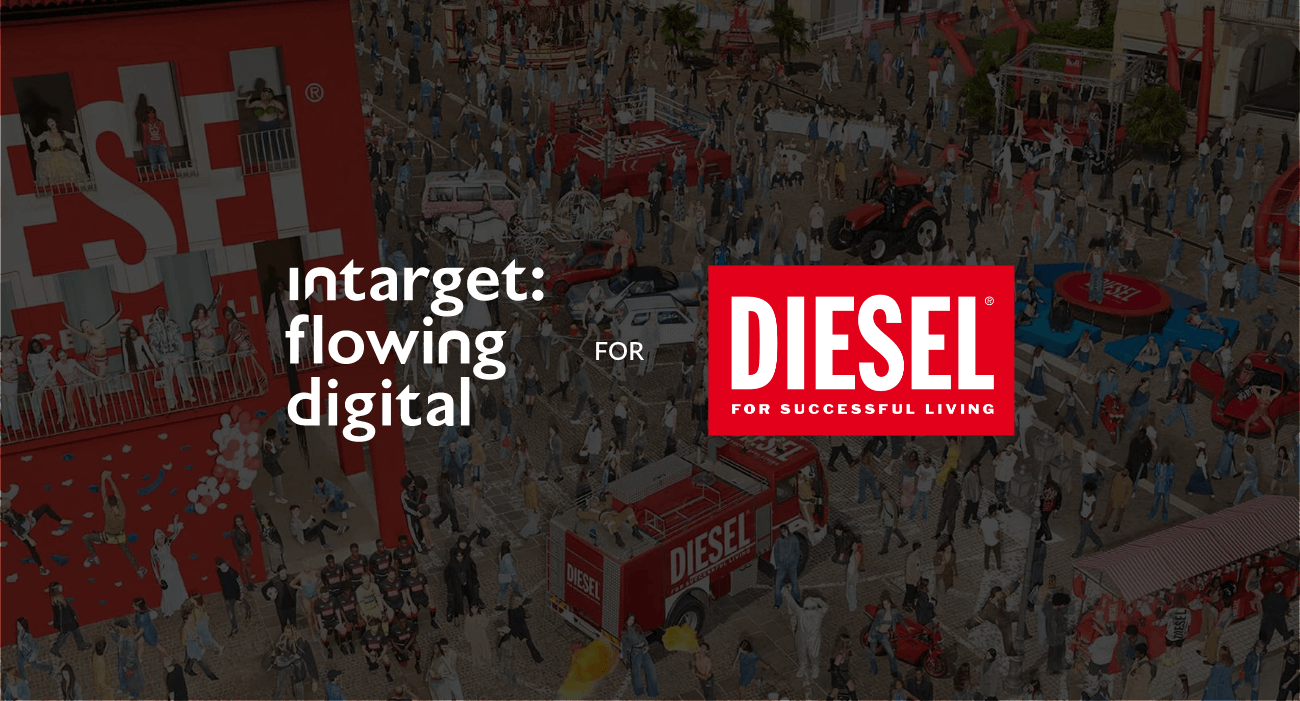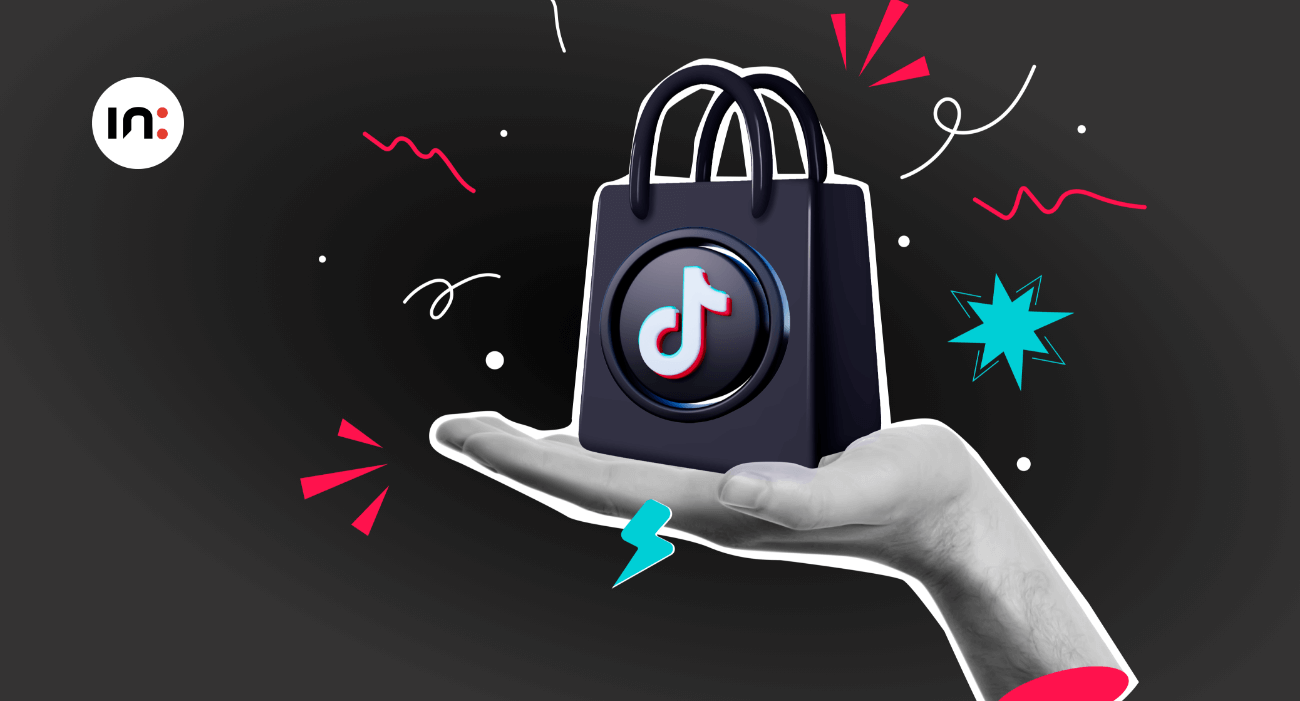
COMMUNICATING FASHION INDUSTRY: A GUIDE BY INTARGET
Interview with Alessio Garbato, Business Partner at Intarget
Year after year, Intarget strengthens its position in the fashion sector, increasing the number of entities it supports in digital growth globally. A real compass for the entire sector, leveraging years of experience and innovations to provide the best possible strategy.
Intarget’s most recent win of the request for proposals from Diesel, wherein Intarget becomes Diesel’s new digital marketing agency for the European market, confirms that the path they’ve taken is the winning one.
In this regard, we asked a few questions to Alessio Garbato, Business Partner at Intarget, to better understand the fashion sector and how it’s changing.
To our dozens of strategies for Italian and international fashion giants, Diesel has now been added, a result that confirms our expertise in the sector.
Indeed, we’re already managing various marketing and communication aspects for some of the biggest names in Italian fashion and beyond, such as Dolce & Gabbana, Benetton, Ferragamo, Stone Island, and Gianvito Rossi, to name just a few. We participated in Diesel’s RFP confident that Intarget could perfectly meet the brand’s needs.
How have brand needs evolved in recent years?
I must say that fashion is divided into two areas: mass-market and luxury fashion.
In recent years, pre-COVID, campaigns, both social and display, were quite standard for mass-market, while post-covid, optimization of investments began, especially in luxury fashion.
A series of algorithms are starting to be developed for individual targets, to plan where potential customers click the most, and thus buy.
This is because the priority is to convert as best as possible, and carry “the right message, to the right user, at the right time”. Brands must manage a large budget with the objective of ROI, and optimization is needed which involves Marketing Intelligence and customer analysis for each individual country to understand the markets, the users, and how they differ.
And in the case of Diesel?
Some brands like Diesel optimize investment where the average cart and volume are highest. This also follows socio-political updates and addresses issues such as the cessation of individual countries. To overcome this, strategic audience analyses have highlighted smaller countries that quickly reached significant volumes, achieving one of the initial goals we had set: finding new customers, new segments, and new interests, always aiming for significant ROI and brand awareness expansion.
Did this understanding help you to win the contract?
We believe so. Fashion, in general, is focusing its investments on targets, which is why an agency with a Market Intelligence division like Intarget is needed. I think this – along with awareness of market variations both temporally and spatially – was the decisive factor in winning the contract.
Are Artificial Intelligence and Augmented Reality important in fashion?
Artificial Intelligence plays a major role in fashion and will become more central. The goals in this regard are twofold: optimizing actions by delivering the right message at the right time and increasing customer base. In recent years, fashion has started analyzing new data, thus it was one of the first sectors to embrace AR and AI.
Some Social platforms allow for AR usage, in which the user is engaged with the product: with a younger target of creators and advertising formats where a game character can wear a brand’s t-shirt. When I see that I can try a garment, it means I’m considering it, not just awareness but also consideration: this phase didn’t exist in social media before, but now they have become interactive and fashion, unlike other markets, obtains significant audience data.
Isn’t there a privacy issue?
Privacy, a strong focus for Intarget, is a fundamental point in strategies. We surely cannot trace back to who “uses the glasses”, but probably the player who tries them in social media will then look for the glasses online or enter a store, providing the fashion house with a series of information needed to plan campaigns for a specific target. Not on an individual but on the archetype this person represents, not only with socio-demographic characteristics but also with very specific attitudes.
Intarget has 51% of the fashion and luxury budget invested in the Americas, 38% in EMEA countries, and 11% in MENA and APAC regions, continually proving to be a strategic partner for international positioning in the fashion industry.
What are the differences between the various markets?
They are completely different in terms of volume: the United States and China indeed account for double the entire EMEA (Europe, Middle East, and Africa). In the US, there isn’t much focus on brand awareness, which would lead to very high expenditure, but on performances. Whereas, in the APAC (Asia Pacific area), the investment in branding is important to bring the product to the consideration phase.
What strategies do we employ to operate in the different markets?
We shift the concentration of investments based on the funnel, consumer analysis, and competition, where we also find the presence of Marketplaces that dominate in advertising strategies through a wise study of consumers and their habits. The ultimate goal is, of course, to generate revenue, what changes from region to region is how this goal is achieved. Diesel has excellent brand reputation in EMEA and work is day by day, through Marketing Intelligence analysis aiming to find new consumers to boost sales.
In practice, how will Intarget help Diesel in the next two years?
In the first three months of campaigns, we had to deeply understand the target audience, in the next six, we will implement what we’ve learned:
Diesel has raised the product and positioned itself as an alternative to luxury, so we will work on enhancing the luxury products it offers.
- We will leverage communication globally, we will optimize investments and performance in the countries that are most appealing to Diesel;
- we will start focusing on dedicated campaigns in specific countries, on markets that are responding well to the rebranding, to attract users who were no longer likely to purchase;
- we will stabilize the main markets to raise the secondary ones.






